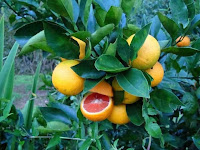There are many terms used in hand cream and lotion making. Here is a glossary to help you understand what to order and what the various items do.
Humectant
A humectant is something that helps to draw moisture in. Glycerin is a common humectant, that is used in soaps and lotions. I happen to personally LOVE glycerin based soaps and lotions - they help your skin feel soft without feeling greasy at all.
A humectant is something that helps to draw moisture in. Glycerin is a common humectant, that is used in soaps and lotions. I happen to personally LOVE glycerin based soaps and lotions - they help your skin feel soft without feeling greasy at all.
Emulsifier
You probably know the old adage that oil and water don't mix. Of course, oil and water are two main ingredients in pretty much every lotion and cream! The first times I made lotion recipes, they immediately separated out into an oil layer and a water layer. This is because I didn't have enough emulsifier in there. The emulsifier lets those two items mix together.
You probably know the old adage that oil and water don't mix. Of course, oil and water are two main ingredients in pretty much every lotion and cream! The first times I made lotion recipes, they immediately separated out into an oil layer and a water layer. This is because I didn't have enough emulsifier in there. The emulsifier lets those two items mix together.
Unibase / Hydrophilic Ointment
There are a number of names for this stuff. In essence it is a lotiony base that helps the other ingredients all blend together well. You usually have to special order it (yeah, and when you find it, make sure you buy enough for the entire process of creaming).
There are a number of names for this stuff. In essence it is a lotiony base that helps the other ingredients all blend together well. You usually have to special order it (yeah, and when you find it, make sure you buy enough for the entire process of creaming).





